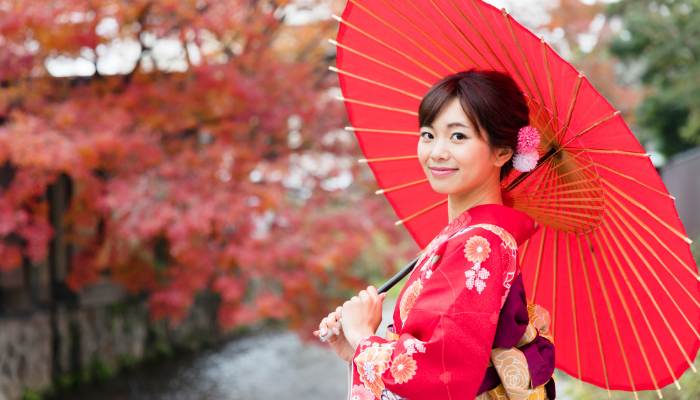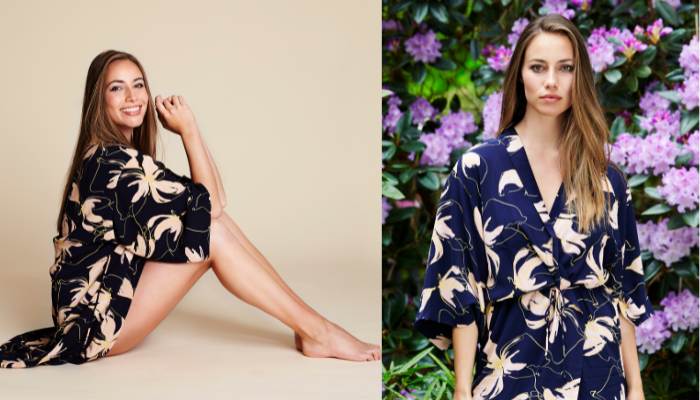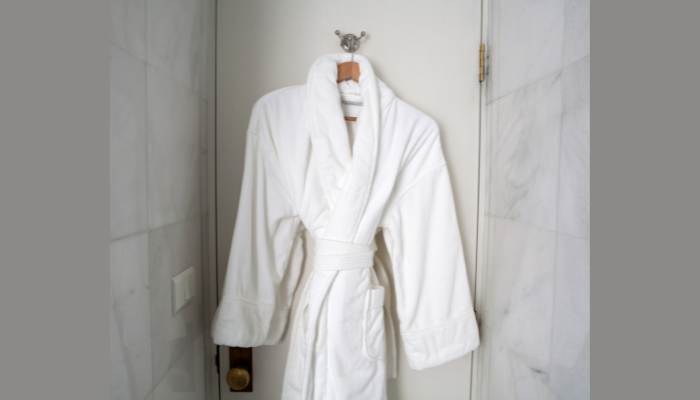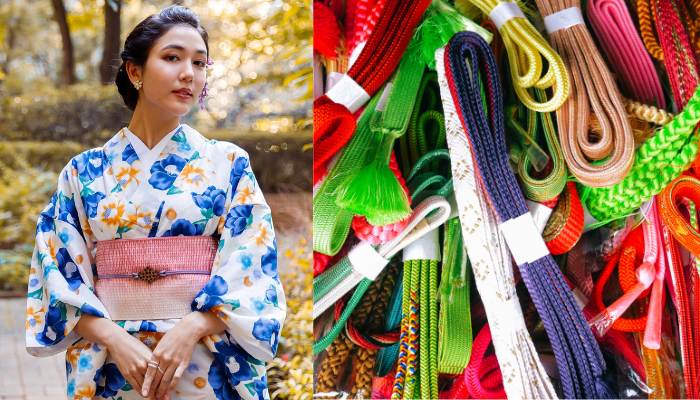When I first got about traditional Japanese women's dress, I was awed by the beauty and historical importance of each item. From the Japanese Kimono to current forms, Japanese outfits blends cultural importance and artistic beauty. In this post, I will walk you through the world of ancient and modern Japanese clothing, with a focus on the legacy and allure of Traditional Japanese women's clothing.
The Iconic Kimono
Clearly the most iconic style of traditional Japanese women's attire is the kimono. For ages, Japanese fashion has been built mostly around this T-shaped, wrapped garment.Origins and history:
- Derived from the ninth century Chinese hanfu.
- Established into its present shape during the Heian era (794–1185).
- During the Edo era (1603–1867), became the main clothing code for all social levels.
Structure and components:
- Made from a single piece of cloth.
- has many levels, which includes:
- Juban (clothing).
- Main robe.
- Obi (broad sash).
Read also: 5 Japanese Fashion Styles to Refresh Your Wardrobe in 2024
12 Traditional Japanese Women's Clothing
1.Kimono
The most famous and immediately identifiable of all traditional Japanese attire, the kimono is still a staple garment for many Japanese people and is rising in worldwide popularity too. Drawing inspiration from old Chinese style apparel, the kimono was worn originally with a hakama, a long skirt like item that occasionally included a separator along the center. Over time, however, preferences evolved and it became considerably more fashionable for the kimono to be worn without the skirt and instead kept together with a sash known as an obi. Typically worn for special events, both traditional and modern, the kimono has lasted the test of time, its "flattering and body-hugging silhouette is a timeless expression of Japan’s high admiration for well chosen beauty.
2. Yukata

Simply explained, the yukata is the lighter, summertime variant of the kimono. Made from soft, lightweight fabric like cotton, the garment's name translates to swimming cloth, for which it was initially made. Worn by men and women the yukata is secured with a sash (obi) and is extremely simple to wear. It is most widely used when onsen swimming, and its beautiful and airy robe is also the unofficial costume for vivid summer matsuri events during the warm summer months.
Men’s yukata tend to have muted hues like gray and navy, but otherwise are fairly similar in style to women's yukata. These casual kimono may be donned with little to no aid, making yukata an easy gateway to the realm of Japanese traditional dress.
Read also: Winter Color Palette Korean Fashion: Chill with Style
3. Hanten

A hanten is a winter coat that was primarily worn by average people during the Edo period. Its history may be far-reaching, nevertheless, owing in large part to its basic, simplistic style, the jacket is a highly adaptable item of clothing that can very effortlessly integrate into the modern-day wardrobe. The throw-over type coat-jacket is cushioned and designed for a warm, yet flattering fit. If you’re interested in infusing some Japanese flare into your wardrobe, this is a wonderful place to begin, and even better we’ve already created a complete guide here.
If you know someone who continues determined to appear nice even while temperatures are falling, inform him that wearing a hanten is how it should be done. Hanten layer effortlessly and mix nicely with work casual clothes and athleisure. For extra warmth, put in a few kairo, or hot sachets, in the pockets of the hanten.
4. Haori

A more formal manifestation of the hanten, a haori is a medium-length jacket meant to be worn over the kimono. In former periods was only available to people of a higher social level, whereas in the Sengoku era, men would wear sleeveless forms of the haori over their armor like tabard was worn in Europe. Women also dabbled with wearing the haori as a statement style item, a trend popularized by geisha in the 1800s.
This includes tying together segments of the cloth before it is dipped into to produce elaborate patterns between the colored regions and raw fabric. Each of the hundreds of tiny dots you see has been hand-tied to produce this interesting design. You may check out our antique haori collection here.
Read also: 80s Male Alt Fashion: From Mohawks to Doc Martens
5. Samue

Samue is an extraordinarily plain garment initially worn by Japanese Zen Buddhist clergy, yet even to this day while they are participating in physical, focused activity known as samu. Activities that come under the samu banner include cooking, cleaning, outdoor work, and they’re all thought to be wonderful methods to develop the skill of mindfulness. Consisting of a basic pair of trousers and a shirt, they’re often constructed from linen or cotton and stained indigo blue, or brown. Its subtle simplicity, and well thought design is a good depiction of the practice of Zen Buddhism. To find out more about Samue, check out these 10 Things to Know!
Samue loungewear is intended for modern living and is totally customizable to offer optimal comfort whether resting at home or conducting errands around town. The nicest cotton samue loungewear to be found is handmade in Kurume, Kyushu. For even better comfort, check out our samue pajamas!
6. Kimono Robes

A kimono robe is really more comparable to a yukata, the kimono's more casual and relaxed cousin. The history of kimono garments is connected with bathing culture and ryokans, or Japanese style inns, featuring onsen hot springs. Bathing tradition in Japan goes back to the 12th century Kamakura era.
Nowadays, the yukata you may find at a ryokan have been simplified so that they can be worn very quickly with a single tie around the waist, much like a bath robe. They don’t need any special undergarments, additional knots, or difficult folds.
7. Men's Nagajuban Robes

Men's nagajuban are worn beneath a kimono in order to keep it clean and dry. These kimono undergarments generally constructed from white cotton or silk fabric, yet it’s not rare to find antique nagajuban with elaborate hand-painted artworks, making them a perfect as loungewear robes too! Check out the collection here.
8. Obijime

The obijime is a gorgeous, braided thread that is twisted around the obi, then tied at the front of the kimono. Originally they were considered to have been presents from a patron or lover, but now you may purchase your own! Obijime may be found in most current kimono outfits in a great range of styles, colors, forms, and materials. However the most popular obijime are to made of silk.
9. Nagajuban

Hidden beneath a kimono is where you’ll discover a nagajuban a tiny robe meant to keep the remainder of the kimono clean. The item, which is usually made of silk or cotton, separates the kimono's layers from the body. Kimono may be exceedingly difficult to clean, particularly when made of silk, thus the nagajuban is vital to keep perspiration away from the outside material. The nagajuban is generally only visible at the collar, where you notice a small strip of white.
Even simpler than a nagajuban this men's cotton kimono undergarment, or hadagi, will keep you comfortable and clean while wearing any kimono, yukata, or other outerwear. A short-sleeved kimono undershirt like this is simply buttoned up. It is frequently worn with panties, or lightweight shorts.
10. Setta

Did you know that all setta are a kind of zori, but not all zori are setta? Setta are simpler to wear than other traditional footwear being lightweight, softer, and having a flat heel. Unlike zori’s straw or wooden sole, setta sandals contain an extra leather sole, providing it both toughness and water resistance. Because of this, it is more suited for the rainy season and more resilient to the humidity of Japanese summers. The heel setta typically incorporates a metal clasp, which generates a unique sound as you walk. If you want to check out setta for yourself, have a peek at our collection!
11. Zori

Zori are the go-to footwear when it comes to traditional Japanese fashion for both men and women! They have been constructed from a number of various materials throughout the years. The characters literally imply straw, however these days they are very commonly created using synthetic materials. The basic flip-flop type shape makes them an easy accessory to integrate into your outfit. Zori may be both casual or formal, typically chosen by the color of the toe strap, or hanao, and are more often than not worn with tabi socks. Women’s zori possess a wedge-like form, but men’s zori have a flat appearance. Find out more about the variations between Japanese traditional footwear at our post on Japanese Sandals.
12. Jinbei

A bit akin to a samue in style, jinbei are commonly worn by average daily people, and hence often have more ornamental flourishes than its Zen Buddhist relative. Made from tough yet natural fabrics like hemp and cotton, the matching top and trousers set, is a summertime home uniform used by men and women, and also children. They are especially popular with guys, who could wear a jinbei to the same occasion that would see ladies donning yukata. Although it’s typically worn at home, jinbei are also regarded acceptable for doing errands, enjoying matsuri festivals and resting at an onsen resort.
Read also: Top 10 Different Dress Codes For Women
Accessories Complementing Traditional Japanese Female Clothing
I was shocked to realize that traditional Japanese women's dress isn’t complete without the correct accessories.
Obi: The Essential Sash
The obi is an important aspect of the kimono attire, working as both a belt and an accent piece. I’ve noticed that the way the obi is bound can affect the overall appearance of the clothing, adding elegance and improvement.
Geta and Zori: Traditional Footwear
To improve the traditional attire, ladies wear geta or zori, which are kinds of wooden sandals. While they may appear difficult at first, they serve a key work in the overall look and feel of the clothing.
Seasonal Styles of Traditional Japanese Clothing
I was interested to read that traditional Japanese women's wear is different with the seasons. Different materials and patterns are employed depending on the time of year.
Spring & Summer Kimono
In spring and summer, ladies wear light weight kimonos made from textiles like silk and cotton, mostly in bright colors and floral motifs. These outfits signify fresh beginnings and recovery, matching the growing beauty of Japan's famed cherry flowers. I thought it remarkable how even the tiniest element in the fabric and color palette can indicate the season.
Autumn and Winter Kimono
For colder months, greater silk or wool clothing are working, with more muted, earthy tones. The designs typically contain fall leaves or winter landscapes, and these Japanese clothes really celebrate the changing seasons in Japan.
Read also: 1950s Women's Fashion Every Woman Should Know
Modern Japanese Clothing Inspired by Tradition
While Japan has advanced in many ways, there’s still an important impact of traditional Japanese women's attire in "modern Japanese clothing." Many "Japanese outfits" now draw affect from the kimono, mixing it into street wear or casual designs. I’ve seen modern kimonos produced with novel fabrics like jeans and styled with trendy accessories.
Fusion of Tradition and Modern in Japanese Clothing
When I first met current Japanese attire, I noticed a beautiful mix of old and new. Many ladies now wear a Japanese costume that mixes the framework of a traditional kimono with current designs and cuts. It’s interesting to observe how Japan keeps a balance between its past origins and present-day habits.
Traditional Japanese Women's Clothing for Special Occasions
There are unique forms of traditional Japanese women's dress that are selected for special occasions. These clothes are more ornate and mostly come with exact limits on when and how they are worn.
Furisode: The Kimono for Young Women
The furisode is a style of kimono usually worn by unmarried women for formal events, such as coming-of-age habits and weddings. I adore how its long sleeves and clear topics make it stand out, showing youth and elegance.
Tomesode: The Formal Kimono for Married Women
Married young women wear the tomesode, a more limited kimono with shorter sleeves and fewer ornate plans. This outfit expresses a feeling of age and formality, commonly worn at weddings or formal events.
Conclusion:
In my journey to understand Traditional Japanese women's clothing, I’ve set up a serious understanding for the history, creativity, and cultural importance behind each outfit. no matter it's a formal kimono used for special occasions or a modern variant of classic forms, the beauty of Japanese fashion is apparent. I hope that, like me, you’ll find yourself charmed by the beauty and detail of this historical clothing culture.
FAQ's Traditional Japanese Women's Clothing
What is the traditional dress of Japan for females?
The kimono is the traditional garment of Japan. Typically composed of silk, kimonos have long sleeves that extend from the shoulders to the heels. An obi, which is a broad belt, is used to bind them.
What is traditional Japanese clothing called?
Japan's traditional attire is among the most recognizable features of the country's rich culture and history. Generally referred to as "kimono," which means "a thing to wear," these clothes are available in a variety of shapes and sizes, each with its own history, significance, and use.
Are kimonos unisex?
Men and women alike like to wear printed kimonos for casual wear in both bright and dark hues. Men dress in hakama, traditional Japanese pants, and a montsuki, a formal black silk kimono worn over a white under-kimono, for formal events.
Can girls wear shorts in Japan?
In warmer weather, travelers may wear shorts, but avoid wearing board shorts, cut-offs, etc. The majority of Japanese women cover their cleavage, tummy, and shoulders. Furthermore, most people only wear leggings—yoga pants, etc.—when doing yoga or participating in sports.
Is kimono for male or female?
In Japan, kimonos are worn for a variety of occasions and purposes. For instance, males are expected to wear black kimonos, hakama, and haori to formal events like weddings, whereas women choose their kimonos based on factors like marital status or closeness to the bride or groom.
Do girls wear clothes under a kimono?
You should never wear anything underneath a kimono, which is the traditional Japanese garment worn for social events and ceremonial occasions. This is the case for three primary reasons.

